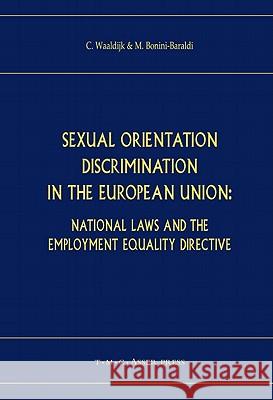Sexual Orientation Discrimination in the European Union: National Laws and the Employment Equality Directive » książka
Sexual Orientation Discrimination in the European Union: National Laws and the Employment Equality Directive
ISBN-13: 9789067042130 / Angielski / Twarda / 2006 / 272 str.
Sexual Orientation Discrimination in the European Union: National Laws and the Employment Equality Directive
ISBN-13: 9789067042130 / Angielski / Twarda / 2006 / 272 str.
(netto: 191,66 VAT: 5%)
Najniższa cena z 30 dni: 192,74
ok. 22 dni roboczych
Dostawa w 2026 r.
Darmowa dostawa!
Chapter 1 1 Introduction Among the recent positive developments in European Union law with regard to the legal situation of lesbian, gay and bisexual persons, the clear prohibition of discrimination in employment and occupation contained in the Employment Equality Directive is the most important. Certainly, since 1999 article 13 of the EC Treaty, which forms the legal basis for this Directive, already mentions sexual orientation among the protected grounds, but this Treaty provision only enables the Council of the EC to adopt appropriate action against discrimination. This is precisely what happened on 27 November 2000, when the Council adopted Directive 2000/78/EC establishing a general framework for equal treatment in em- 2 ployment and occupation (hereafter the Directive). Prior to its enactment, eight of the then fifteen Member States, two of the current new Member States (the Czech Republic and Slovenia), and one of the current acceding countries (- mania) had legislation in place prohibiting sexual orientation discrimination in employment. However, these laws followed a variety of approaches, which were not always consistent with the Directive s requirements. All Member States were required to make some changes to their legislative framework in order to imp- ment the provisions of the Directive with respect to discrimination based on sexual orientation (and with respect to discrimination based on any of the three other grounds covered by the Directive: religion or belief, disability, age)."











